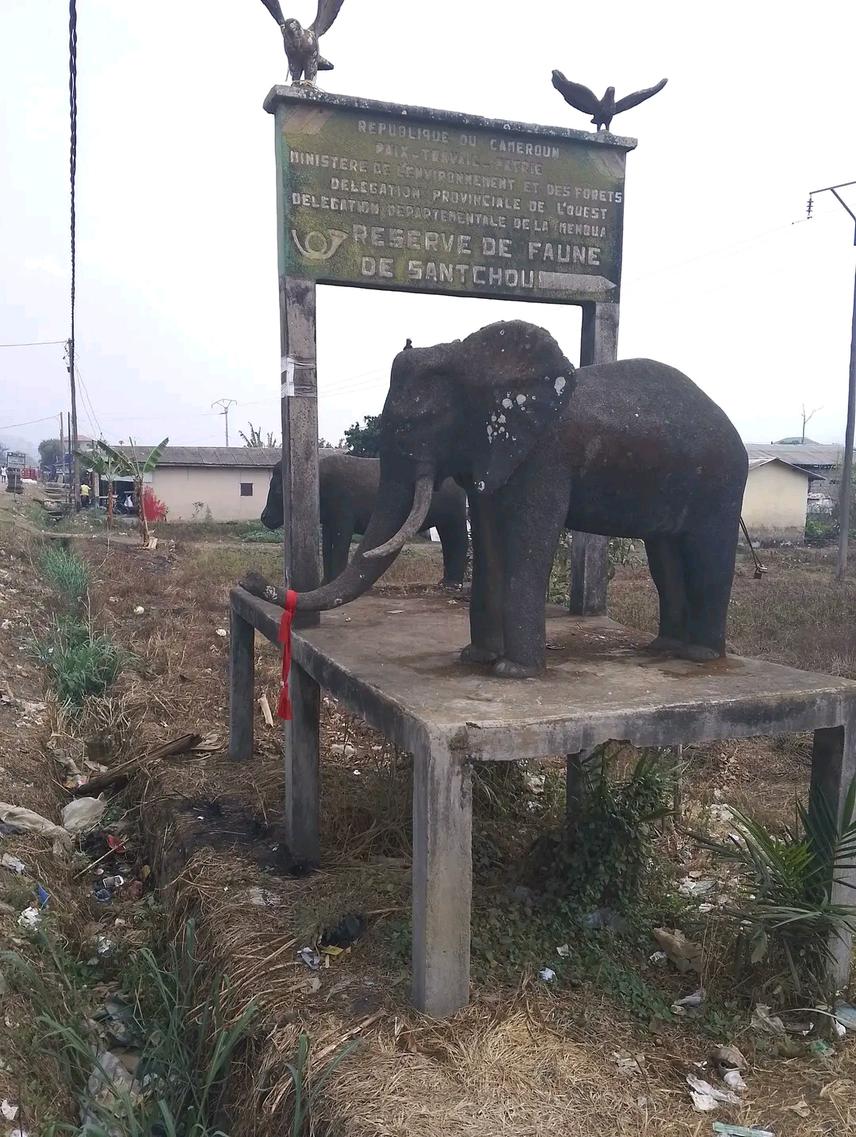Donfack Fouego Ruth Charline
Despite its protected status, the Santchou Wildlife Reserve currently faces a dire situation. Its principal protected fauna (dwarf elephants and dwarf buffaloes), are believed to have vanished due to human pressures. This assumption lacks scientific proof. In 2008, a study was conducted, revealing the dietary habits of the elephant population in the reserve. Since then, no scientific evidence has been gathered to confirm the extinction of these species. Relying on assumptions further places the reserve at risk, potentially leading to continued habitat degradation and irreversible loss. There is urgent need to assess the existence and status of these key species.

Main signpost in Santchou showing images of birds, dwarf elephants and buffalos. ©Deh Nji, 2024.
The purpose of this project is to assess the conservation status of the remaining population of dwarf forest elephants in the Santchou Wildlife Reserve (SWR) by: (1) evaluating the abundance and distribution of dwarf elephants in the SWR so as to document the remaining population size, density, and distribution patterns of dwarf elephants within the reserve; (2) characterizing the habitat of dwarf elephants in the SWR so as to understand the quality and suitability of the existing habitat for dwarf elephants; (3) creating awareness on the existence and status of the species so as to foster support and stakeholder involvement, encouraging responsible behaviour and reducing human pressures negatively impacting the species and their habitats. The project will provide valuable data on the remaining population size, density, and distribution patterns of the species. The characterization and assessment of the habitat of dwarf elephants will help determine the quality and suitability of the existing habitat. The analysis of the vegetation characteristics, water availability, soil types, and topography, conservationists can identify important habitat features and potential corridors for elephant movement. The awareness-raising campaigns will foster support and involvement from the public.